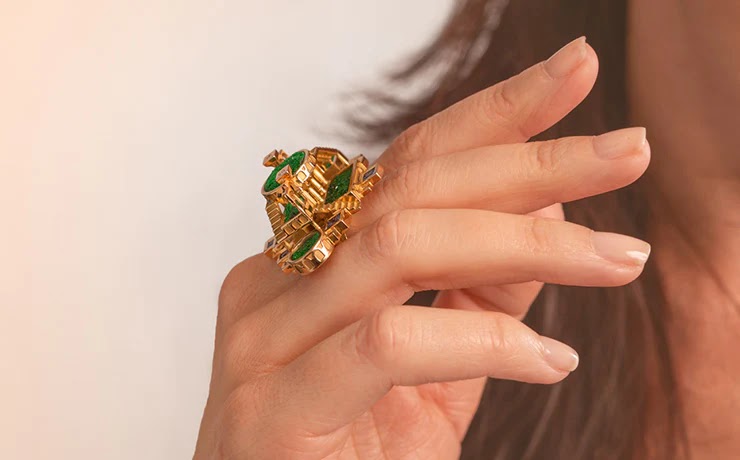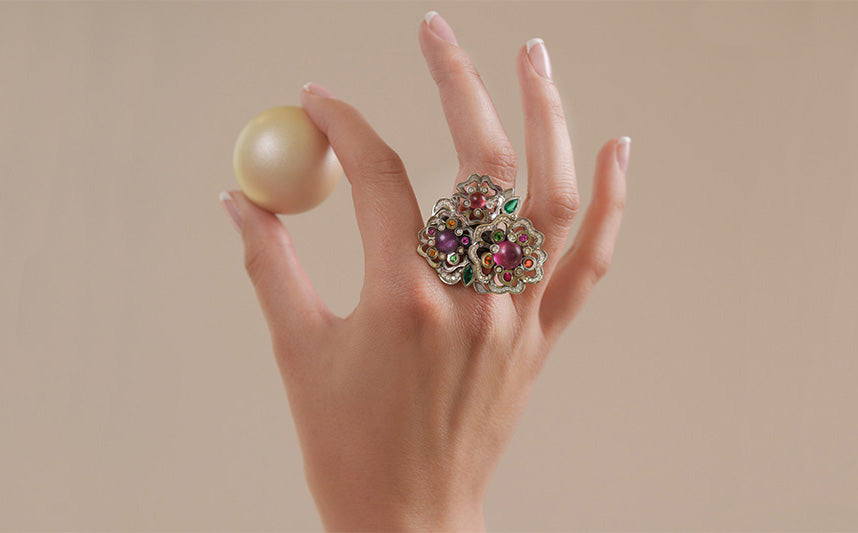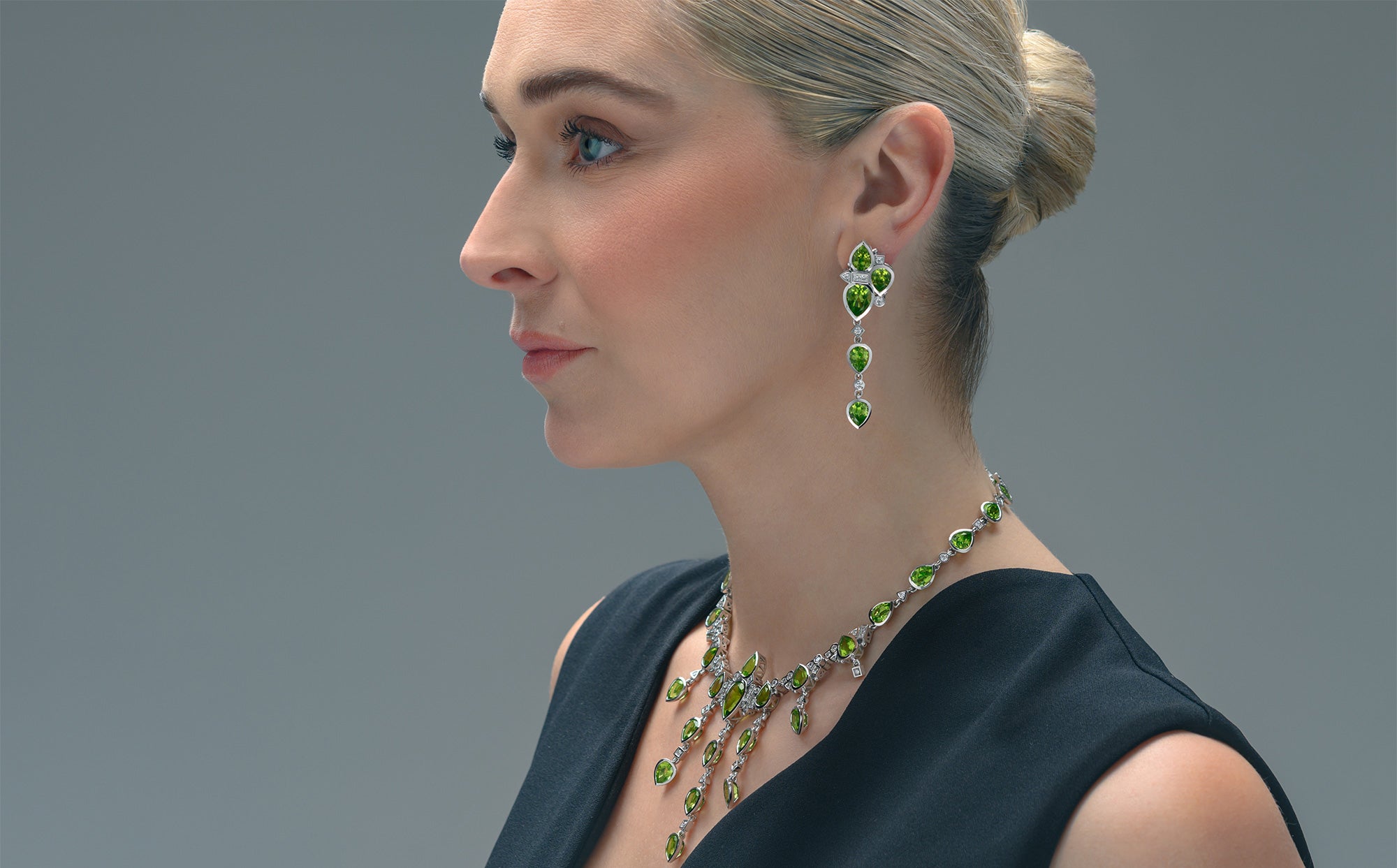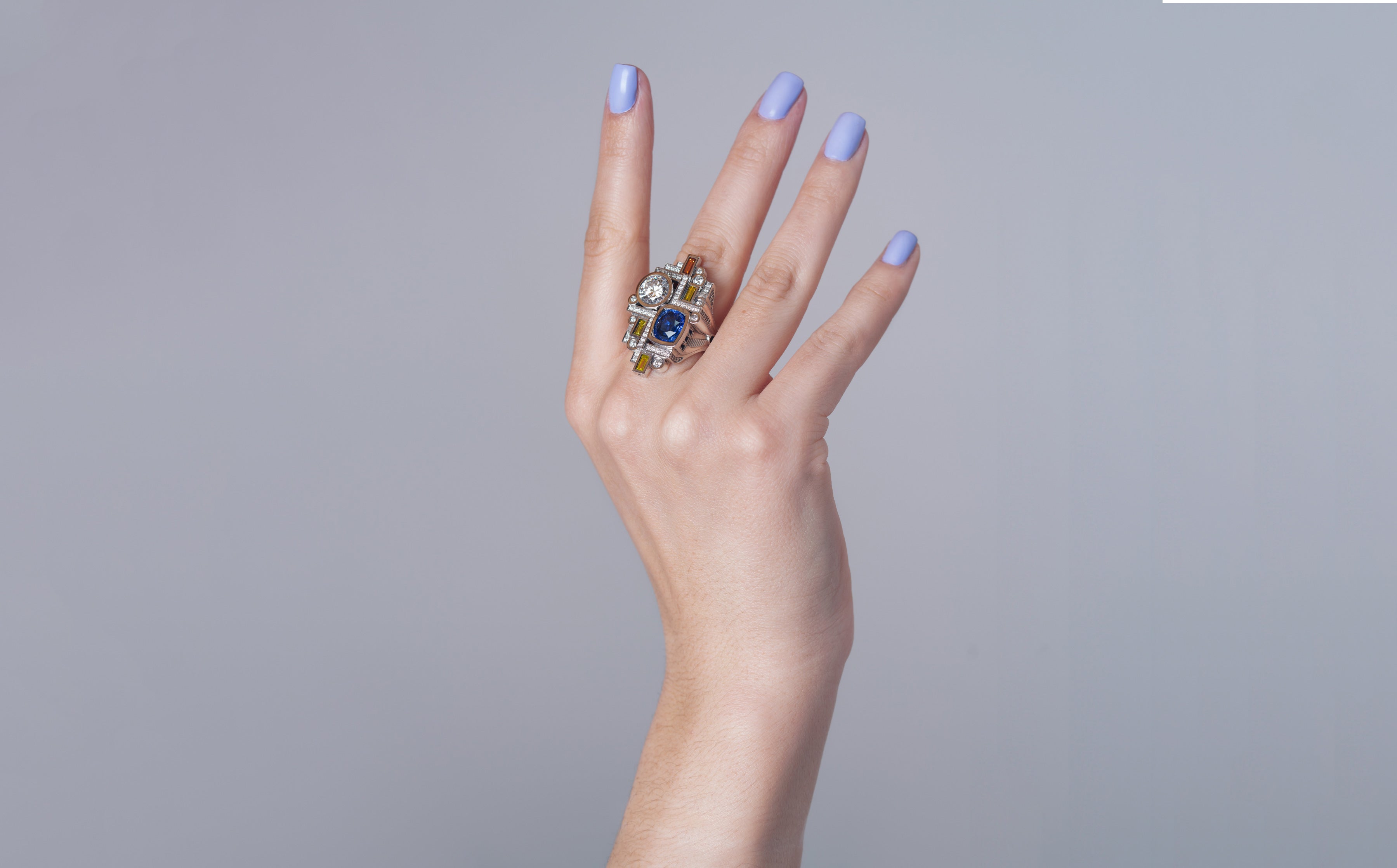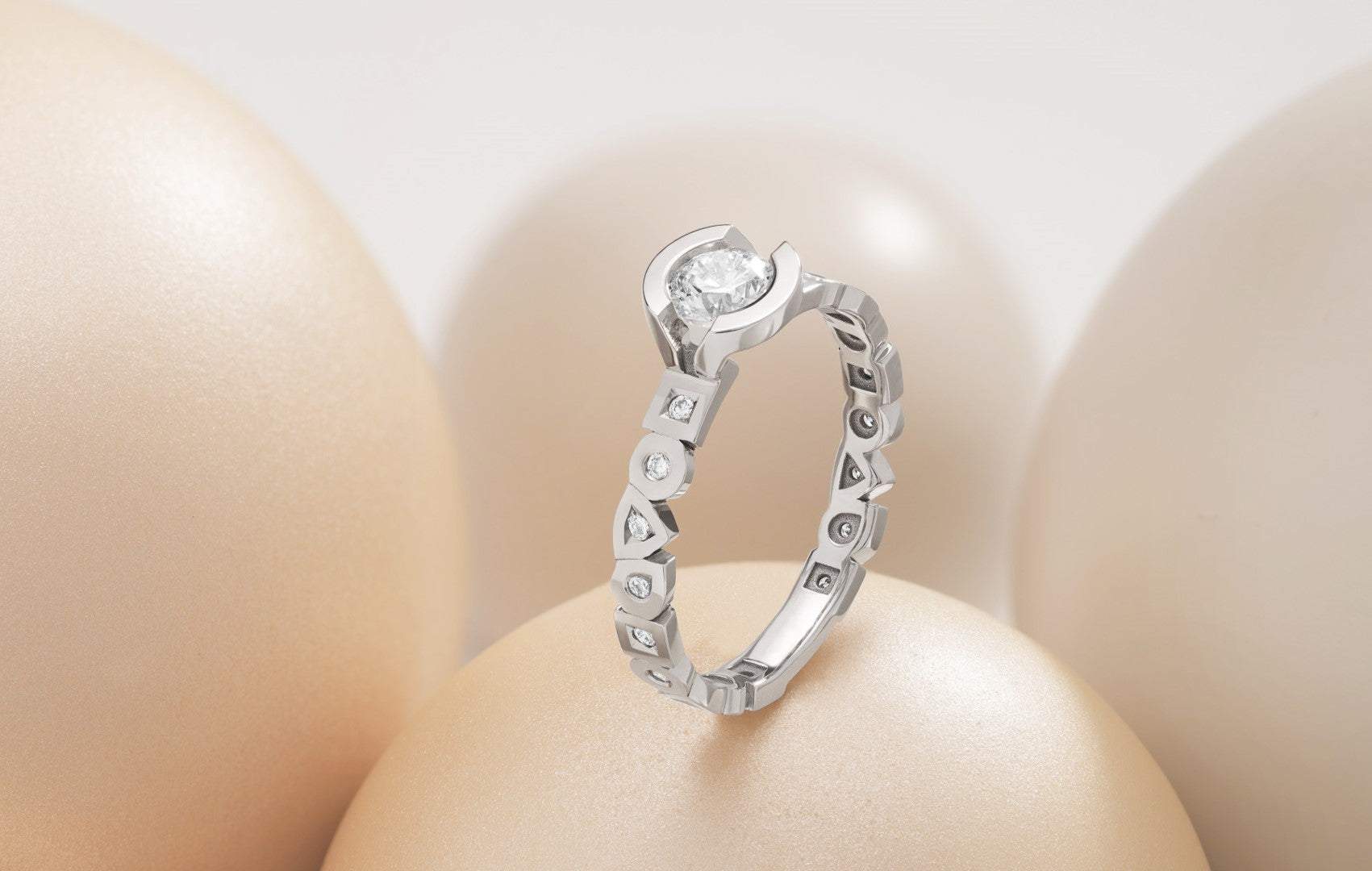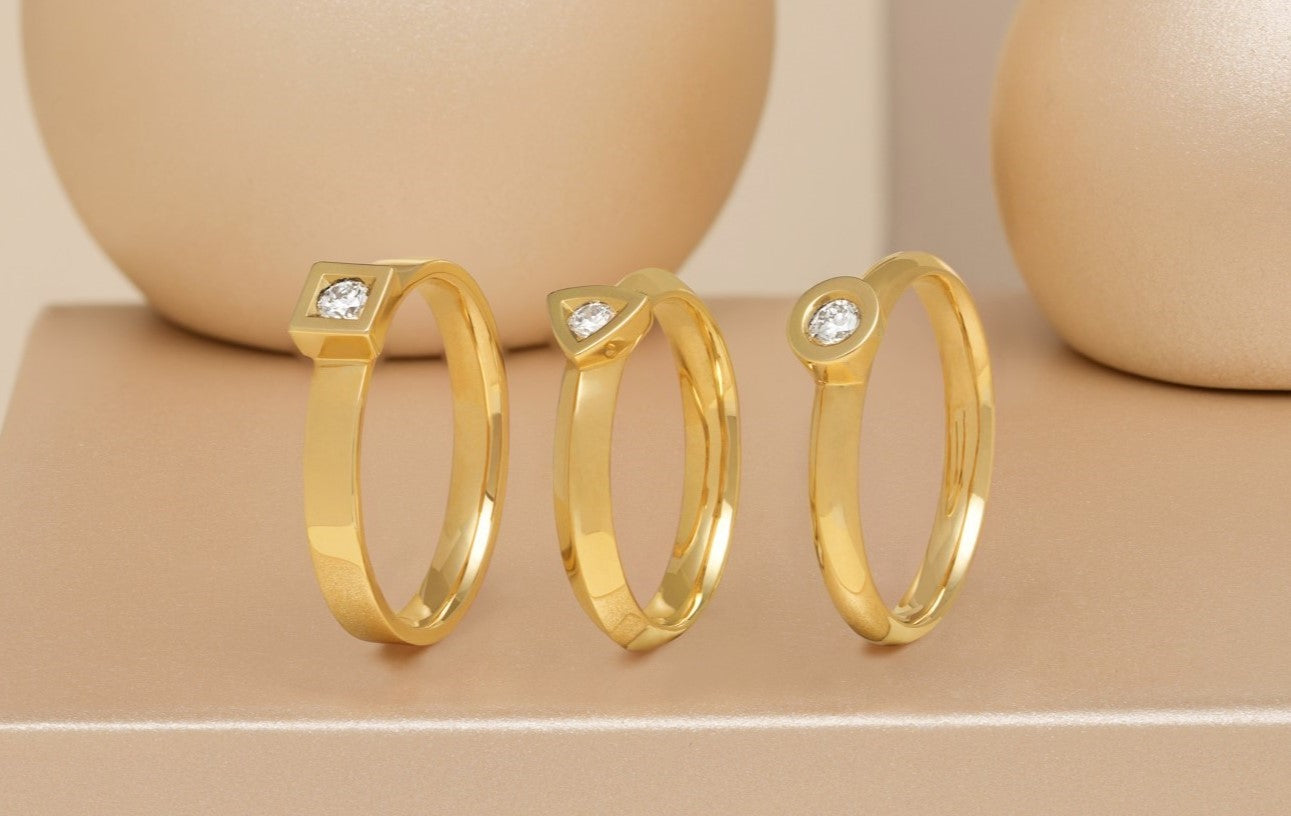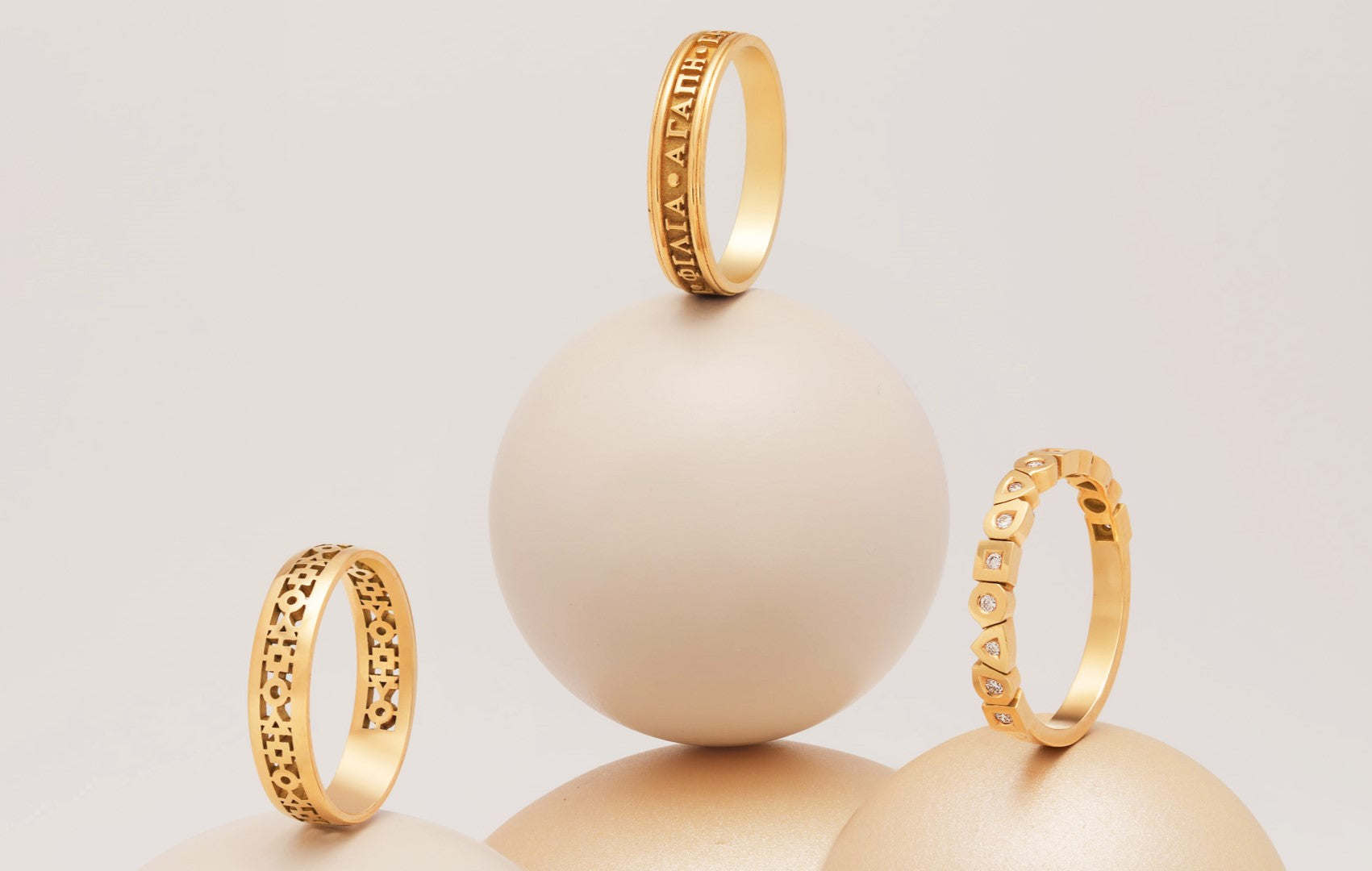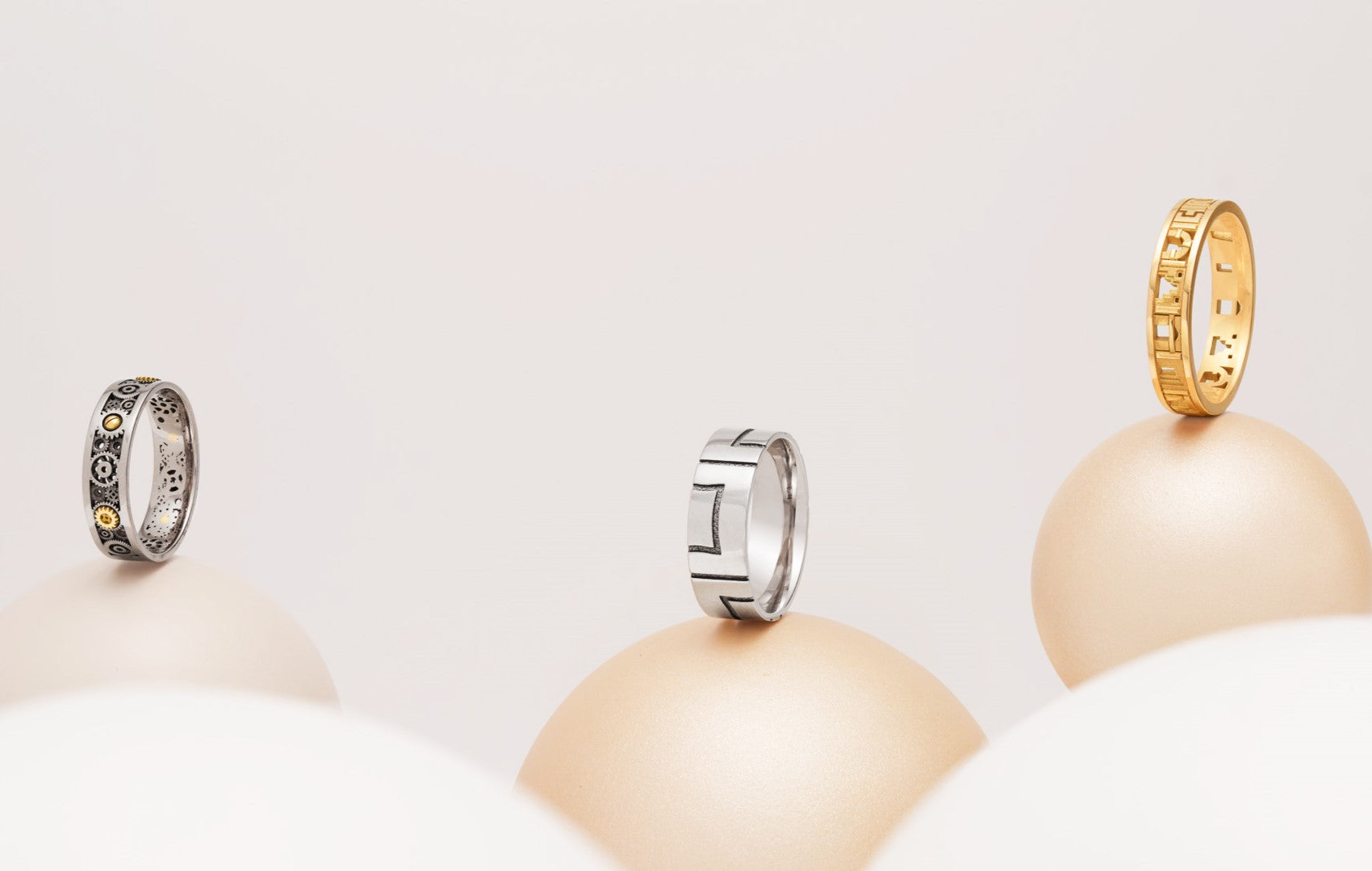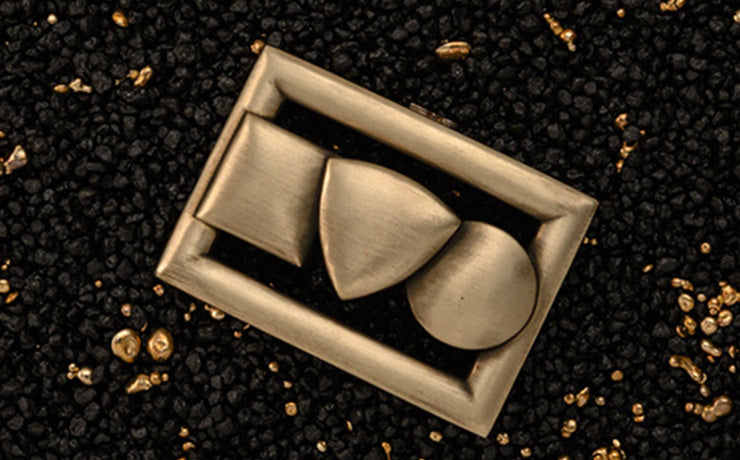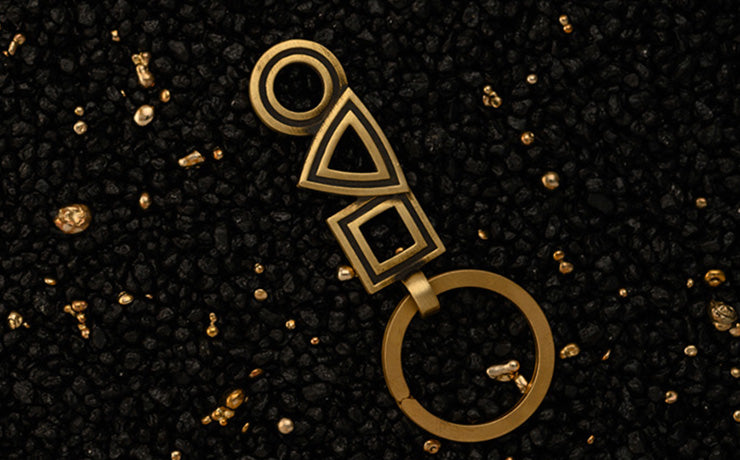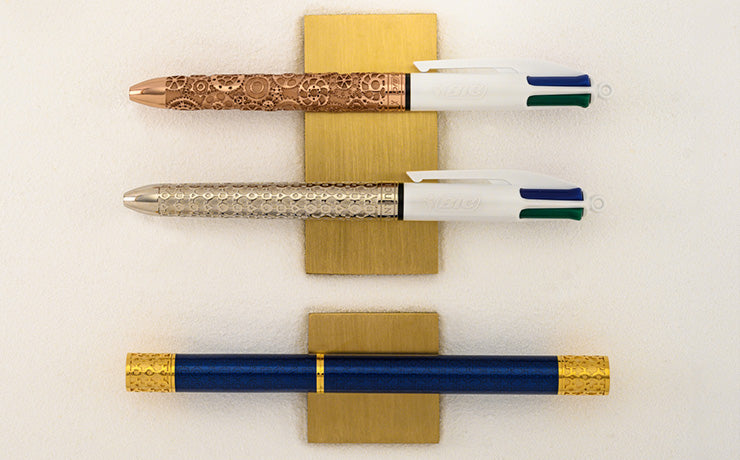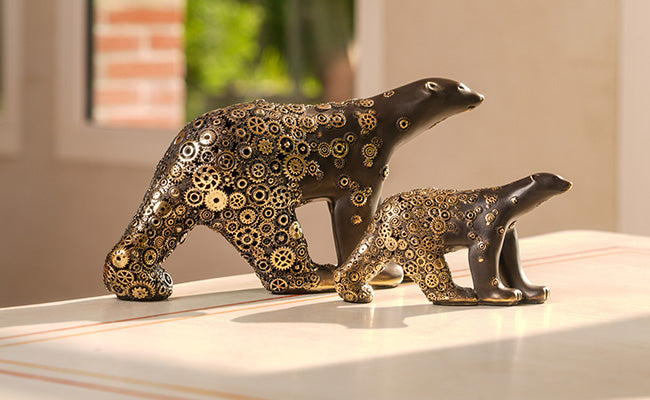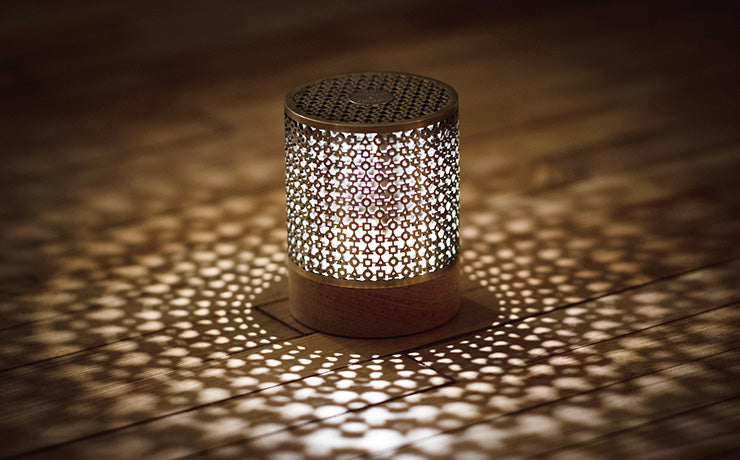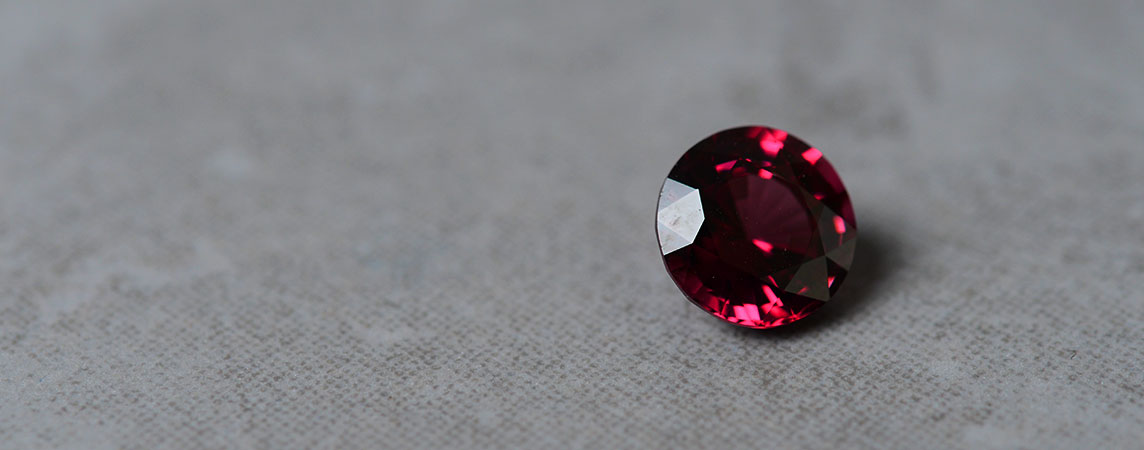
GRENAT
Garnet
The word "garnet" comes from the Latin "granus" meaning "grain", in reference to the somewhat rounded shape of its crystals, but also to the seeds of a ripe pomegranate. It took many discoveries before garnet became associated not just with the color red, but with a multitude of colors.
It's a group of minerals with multiple colors
CHILDHOOD DISCOVERIES
In most people's minds, garnet is simply a red stone. That's without taking into account the range of colors that this family of gems makes available to us! Like sapphire and tourmaline, garnet can take on many different shades of light. This group has many species, including many varieties... It's a large family, whose common feature is that each of its members has an identical crystalline structure. It's their varied chemical compositions that give us a bevy of color combinations!
Philippe Tournaire likes to sublimate these gifts of nature, for example by placing a reddish-purple garnet called rhodolite as the central stone at the heart of a unique creation, or by completing a color harmony with small calibers of bright green garnets called tsavorites. The range of garnet charms is vast: from crimson to orange-red, pink to brown-tinted red, orange-yellow to bright green, emerald-green...there's something for every taste and every budget! And, as in any large family, each one has its own distinctive characteristics, born of its own history, but all based on the same foundations!
Garnets: a group, species and varieties
Tous les grenats partagent la même structure cristalline, à savoir que leurs cristaux sont cubiques à l’état brut, avec une apparence légèrement arrondie. Seule leur composition chimique diffère quelque peu selon les espèces et les variétés. Leur dureté oscille entre 6,5 et 7,5 sur une échelle de 1 à 10, 10 étant celle du diamant. Sur plus d’une vingtaine d’espèces, on en dénombre 5 majeures comme étant les plus connues sur le marché : le pyrope, l’almandin, la spessartite, le grossulaire et l’andradite. L’une des particularités des grenats provient du fait que bon nombre d’entre eux constituent en réalité le fruit d’un mélange entre 2 espèces ou plus. C’est ainsi que le grenat rhodolite (variété rouge sombre à rouge-framboise teintée de pourpre) est né de l’association du pyrope et de l’almandin, au même titre que la plupart des grenats rouges.
The same goes for Malaya garnet (orange-red fire variety), a cross between pyrope and spessartite with a small dose of almandine...
Unlike more famous gems such as emerald, garnet requires no special treatment and is often devoid of inclusions that might detract from its beauty. In fact, garnet has often been used as a substitute for a more expensive stone or one that requires human intervention to reveal its light. A red garnet can turn out to be just as beautiful as a ruby, just as a green garnet can boast even more brilliance and brilliance than an emerald, without having been treated. The abundance of garnets and their diversity of colors are also a major asset, and a key element in their success with a wide public, gained over time.
The origins of a colorful family
Le mot « grenat » vient du latin « granus » signifiant « grain », en référence à la forme quelque peu arrondie de ses cristaux mais aussi aux graines d’une grenade bien mure. Il aura fallu de nombreuses découvertes et décennies avant que le grenat ne soit pas simplement associé à la couleur rouge, mais aussi à une multitude de couleurs plus vibrantes les unes que les autres. Selon la légende, Noé se serait servi d’une lanterne de grenat pour éclairer sa navigation nocturne sur l’Arche. Cette gemme est considérée comme très lumineuse lorsque sa couleur est vive.
Depuis toujours le grenat est apprécié par les grands de ce monde. Serti dans des parures de souverains, le grenat permettait à son porteur de témoigner de sa réussite, de ses richesses. Au Moyen-Age, il était communément appelé escarboucle.
A cette époque, le clergé et la noblesse affectionnaient particulièrement ce grenat rouge. Les gisements de grenats de Bohême provenant d’Europe Centrale découverts vers 1500 ont permis au grenat rouge de connaître son apogée dans le monde de la joaillerie jusqu’à la fin du XVIIIème siècle.
Il est par la suite devenu l’une des gemmes les plus répandues aux quatre coins du globe, au fur et à mesure des découvertes d’autres sites. Parmi les grenats rouges, le plus apprécié et utilisé en joaillerie est le grenat rhodolite. Outre le célèbre rouge, il existe les verts brillants de la tsavorite et du démantoïde, l’orange intense de la spessartite, les rouges pourpres, violets du pyrope et de l’almandin, parmi bien d’autres grenats… french kiss or rose et grenat.
Rhodolite
La rhodolite est un silicate d’aluminium, de fer et de magnésium. Son nom provient du grec« rhodon »pour« rose »et« lithos »pour pierre. Découverte pour la première fois en Caroline du Nord aux Etats-Unis dans les années 1880, la rhodolite est une variété née d’un mélange de 2 espèces : le pyrope et l’almandin. Sa couleur peut être qualifiée de rouge teinté de pourpre ou encore rouge-framboise et est aussi parfois à dominante pourpre. Elle apparaît dans un large panel de calibres et connaît un franc succès auprès des créateurs joailliers, tels que Philippe Tournaire. Ses principales sources actuelles sont le Sri Lanka, la Tanzanie, le Zimbabwe et Madagascar.
The pyrope
Pyrope is an aluminum-magnesium silicate. From the Greek "pyropos" for "fiery eyes, an ember-like gaze" due to its incandescent red color. Its color generally ranges from intense orange-red with brown undertones to crimson-tinged red. Widely used in Jewellery during the era of Queen Victoria (1837-1901), this garnet is now highly prized by collectors of antique Jewellery . It is sometimes called "Bohemian garnet", in reference to an important ancient source. The most important deposits today are in South Africa and the USA.
The almandine
L’almandin est un silicate d’aluminium et de fer. Grenat rouge oscillant entre le rouge-orangé et le rouge tirant sur le violet, il doit son nom à la ville d’Asie Mineure appelée Alabandus. En 3100 avant Jésus Christ, les Egyptiens utilisaient l’almandin dans des incrustations de bijoux ou encore le travaillaient pour en faire des perles de grenat. Les principales sources sont le Brésil, l’Inde, Madagascar, le Sri Lanka, le Pakistan et les Etats-Unis.
Spessartite
La spessartite est un silicate d’aluminium et de manganèse. Les couleurs de cette espèce vont d’orange à rouge teinté de brun, en passant pas un orange avec une pointe de jaune ou de rouge intense, l’orange pétillant étant la couleur de spessartite la plus prisée.
Ce grenat tire son nom de son ancienne source autrefois importante : Spessart, en Bavière. Les plus grands gisements se trouvent désormais au Brésil, à Madagascar, au Myanmar, en Namibie, aux Etats-Unis et au Sri Lanka. L’un des grenats réputés en joaillerie est le grenat Malaya, mélange de pyrope et de spessartite. Allant de l’orange teinté de jaune, de rose ou de rouge plus ou moins prononcé, cette gemme a été découverte en Afrique de l’Est dans les années 1960. Elle est très convoitée lorsqu’elle se montre habillée d’orange vif. Ses sources sont la Tanzanie et le Kenya. Solitaire village rond grenat rouge.
Tsavorite
Tsavorite belongs to the grossular species and is in fact a silicate of aluminum and calcium, combined with vanadium, which gives it its vivid color. This intense, sparkling green gem, sometimes tinged with yellow, owes its name to Tsavo Park, Kenya's national park, where it was discovered in the 1970s. Most tsavorites are small-grained, and its scarcity makes it less abundant than many garnets. As with Malaya garnet, its main sources are Kenya and Tanzania.
The demantoid
Demantoid is a variety of the andradite species. It is a calcium-iron silicate. It owes its vibrant green color to the combination of chromium and iron. Its name means "like a diamond" in Dutch, in reference to its adamantine brilliance. Its color ranges from green to yellow-tinted green, with varying degrees of nuance. What's remarkable and rare about this garnet is the beauty of its inclusions, which are uniquely its own and can positively influence its value.
These typical inclusions are known as "ponytails", i.e. crystal fibers that radiate out from a central point (like a bale of straw, a ponytail or a comet). However, not all demantoids automatically reveal these unique inclusions under the microscope, depending on where they come from. It's very common, for example, to see these inclusions in demantoids from Russia. In fact, it was in 1868 that this highly prized garnet was discovered in the Ural Mountains of Russia. Since then, demantoids have adorned the finest jewelry sets from Jewellery Victorian (1837-1901) and Edwardian (1900-1915).
The Russian jeweler Fabergé drew much inspiration from them, creating sumptuous pieces for the Russian royal family. Today, the main sources of demantoids are Namibia, Russia and Zaire. Many more varieties and species of garnet exist: nature has not finished dazzling our eyes and arousing our curiosity with these gem treasures! The stone of the month of January, a large group made up of species and varieties, garnet is one of the masterpieces of both ancient and contemporary Jewellery. Through his creations, Philippe Tournaire succeeds in magnifying the light that radiates from the varied colors of the large and beautiful garnet family. Let yourself be charmed by the shimmering greens of tsavorites and demantoids, the blazing reds of rhodolites, pyropes and almandines, or the brilliant oranges of spessartites and Malayas!
The Grenats will never cease to amaze you!
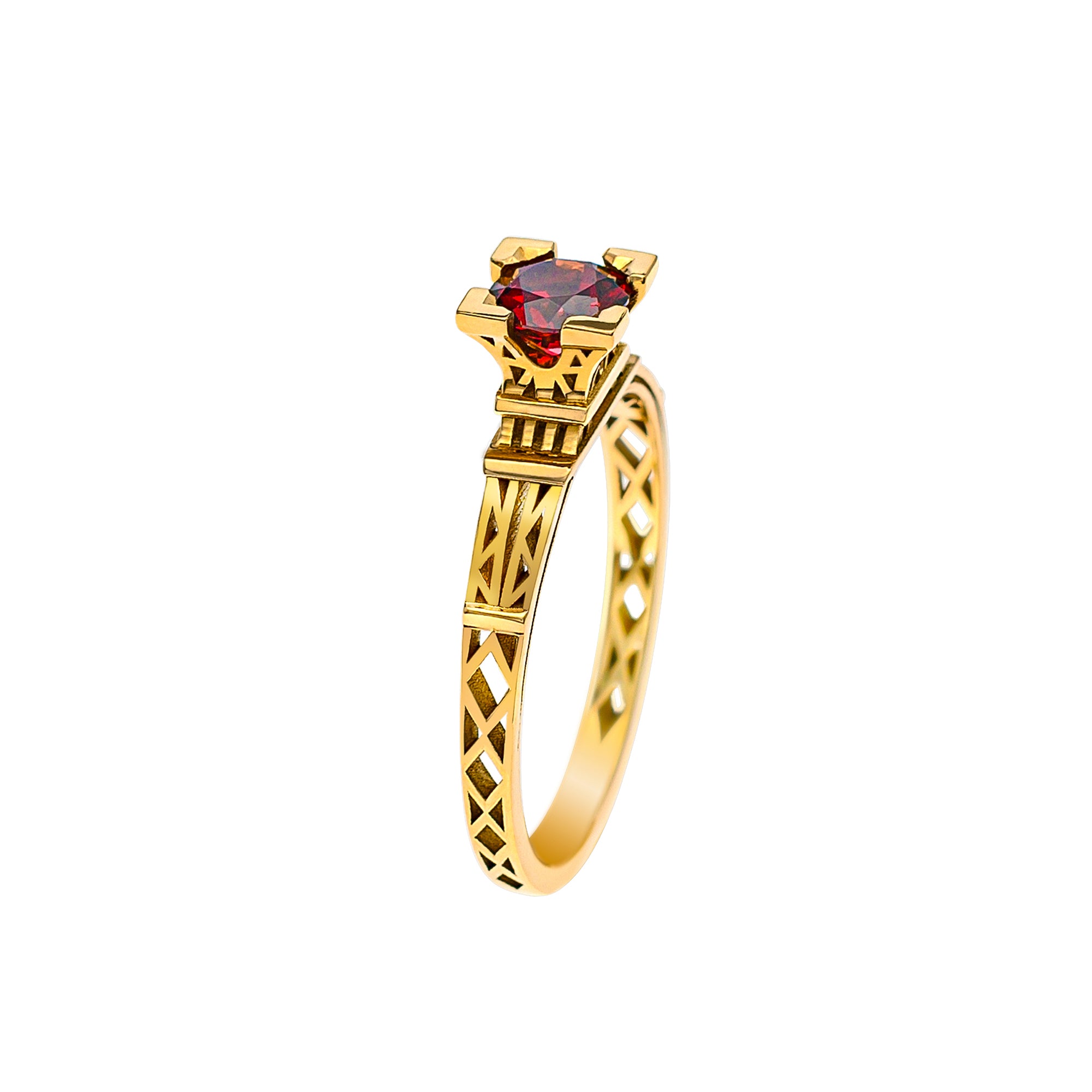
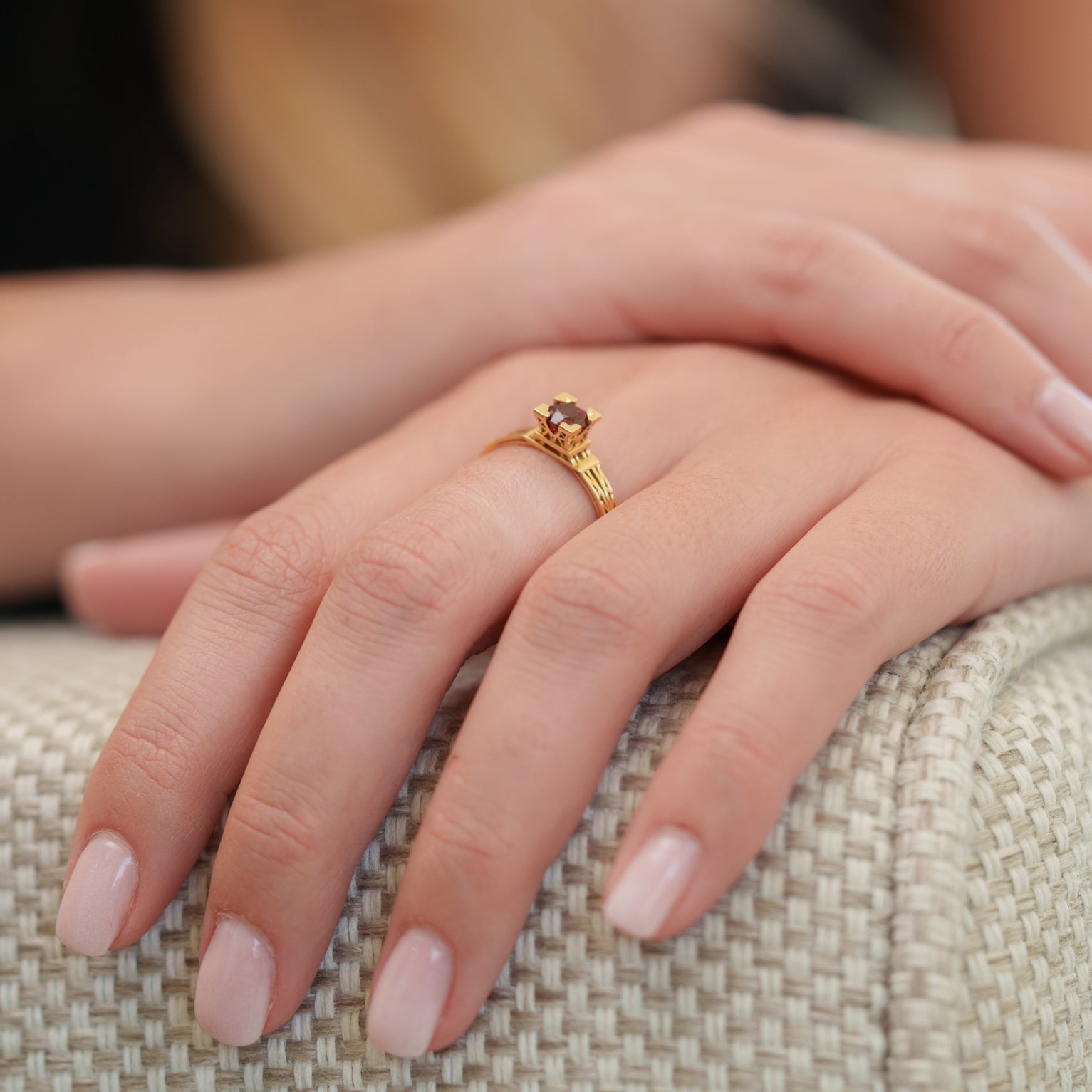
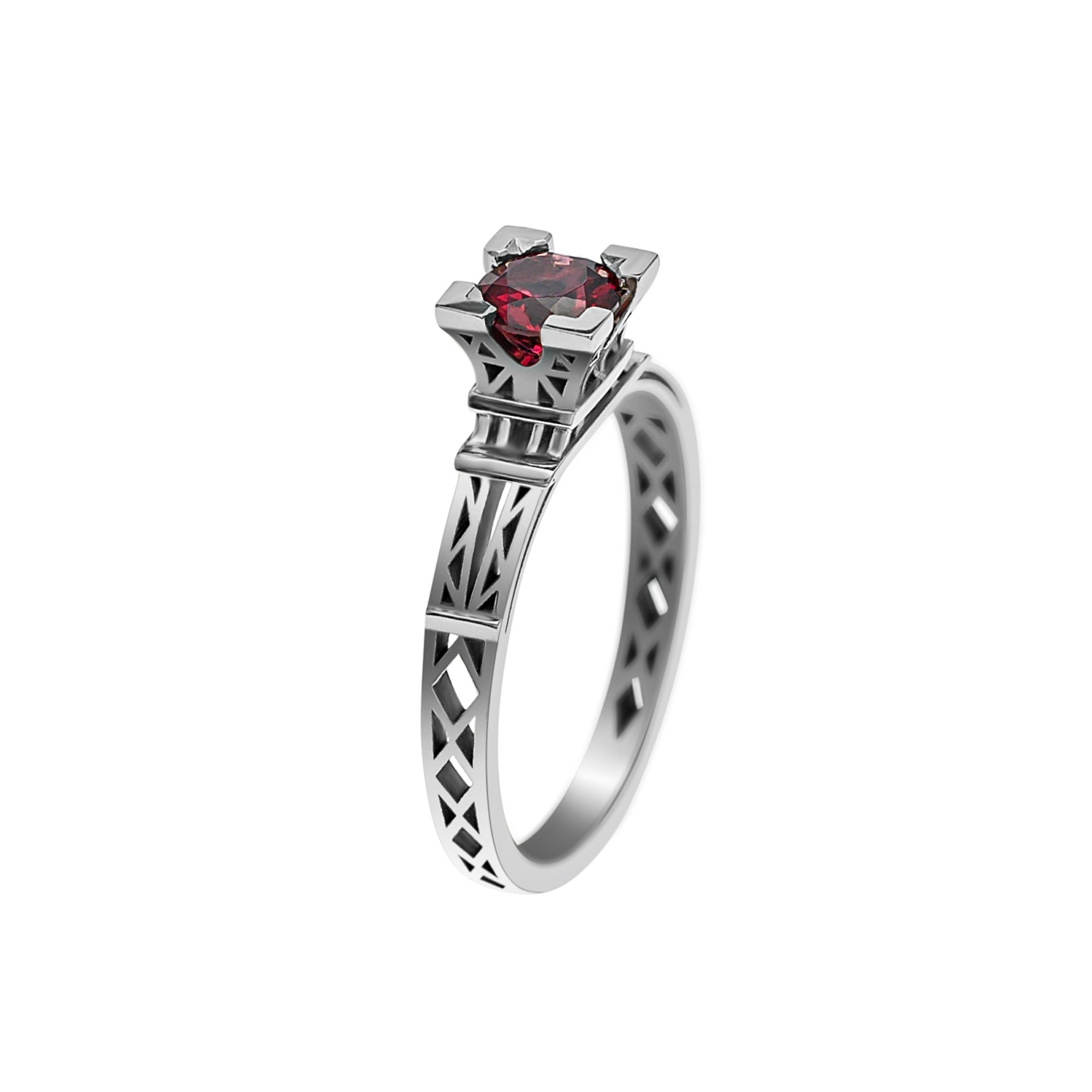
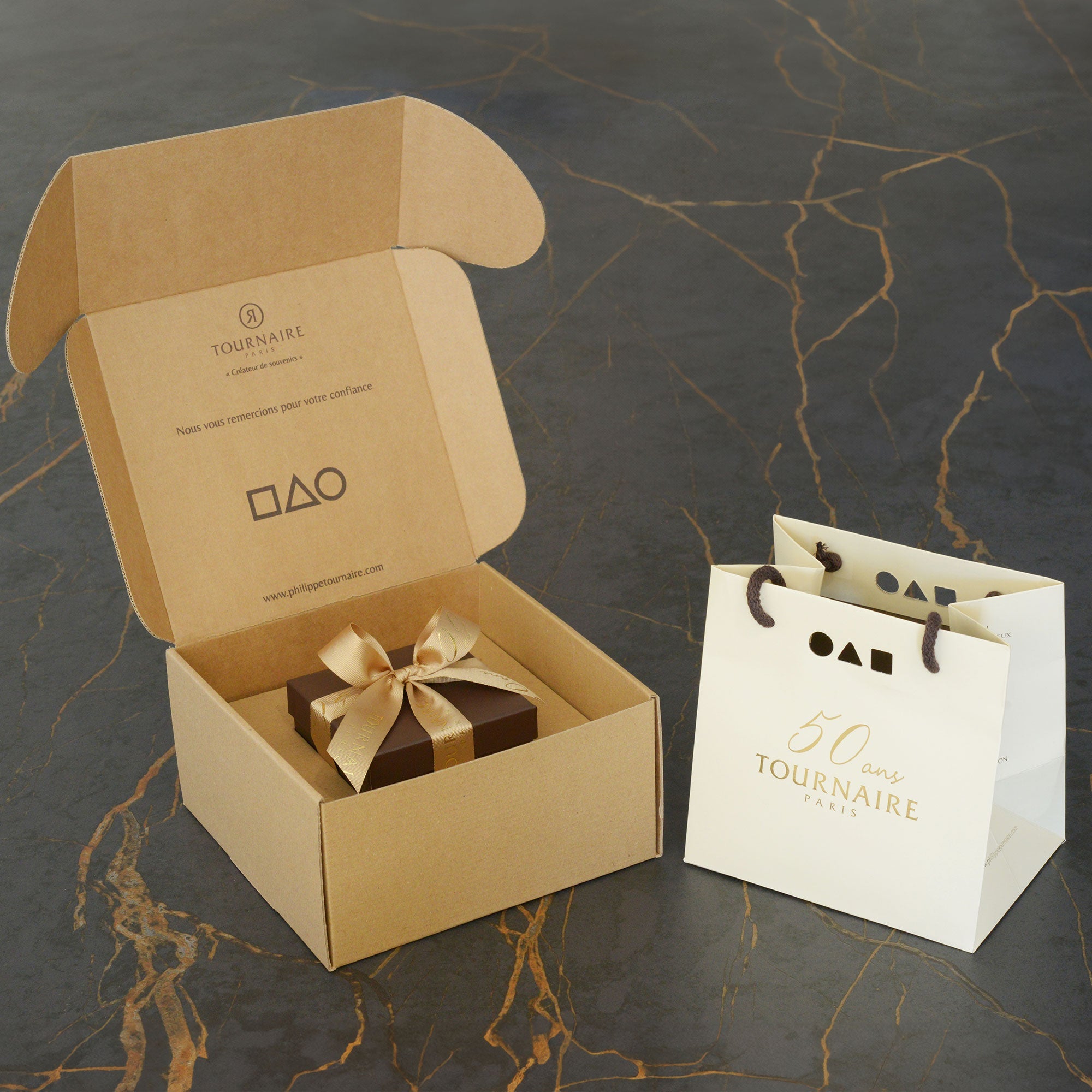
The guarantee of uncompromising craftsmanship
Our titles and labels





Made in France
Made in our workshop

100% secure payment
3x free of charge possible

Free delivery & returns
100% secure and free

Jewellery committed
Ethical and responsible jewelry

